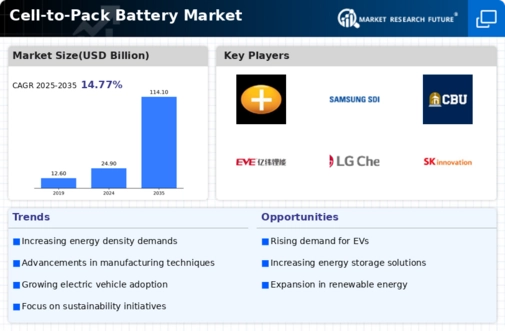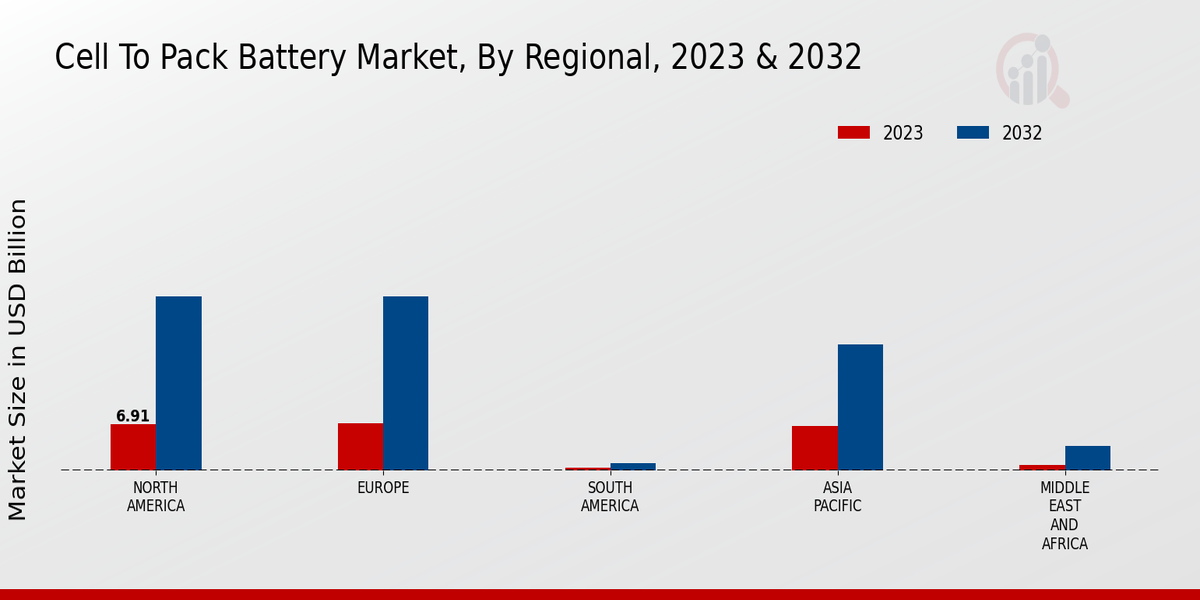Market Growth Projections
The Global Cell-to-Pack Battery Market Industry is poised for remarkable growth, with projections indicating a rise from 24.9 USD Billion in 2024 to 114.1 USD Billion by 2035. This trajectory reflects a compound annual growth rate (CAGR) of 14.83% from 2025 to 2035, underscoring the increasing adoption of advanced battery technologies across various sectors. The expansion is driven by factors such as the rising demand for electric vehicles, advancements in battery design, and supportive government policies. As the market evolves, it is likely to attract significant investments, further enhancing its growth potential.
Government Incentives and Policies
Government incentives and policies play a crucial role in shaping the Global Cell-to-Pack Battery Market Industry. Many countries are implementing subsidies and tax breaks to promote the adoption of electric vehicles and renewable energy storage solutions. These initiatives not only encourage consumers to purchase EVs but also stimulate investments in battery manufacturing. For instance, the European Union has set ambitious targets for carbon neutrality, which includes substantial funding for battery technology development. Such supportive regulatory frameworks are expected to propel the market forward, contributing to the anticipated growth to 114.1 USD Billion by 2035.
Growing Energy Storage Applications
The increasing need for energy storage solutions is another significant driver of the Global Cell-to-Pack Battery Market Industry. As renewable energy sources like solar and wind become more prevalent, efficient energy storage systems are essential for balancing supply and demand. Cell-to-pack batteries offer a compact and efficient solution for large-scale energy storage applications. This trend is particularly evident in grid storage projects, where high-capacity batteries are deployed to stabilize energy supply. The market's expansion in this segment is likely to be substantial, as the demand for reliable energy storage continues to rise in the coming years.
Rising Demand for Electric Vehicles
The increasing global demand for electric vehicles (EVs) is a primary driver of the Global Cell-to-Pack Battery Market Industry. As governments worldwide implement stricter emissions regulations and consumers become more environmentally conscious, the shift towards EVs accelerates. In 2024, the market is projected to reach 24.9 USD Billion, largely fueled by the automotive sector's transition to battery electric vehicles. Major automakers are investing heavily in battery technology, with cell-to-pack designs offering enhanced energy density and efficiency. This trend is expected to continue, as the Global Cell-to-Pack Battery Market Industry aligns with the broader push for sustainable transportation solutions.
Expansion of Renewable Energy Sources
The global shift towards renewable energy sources is a pivotal factor influencing the Global Cell-to-Pack Battery Market Industry. As countries strive to reduce their carbon footprints, investments in solar, wind, and other renewable technologies are surging. Cell-to-pack batteries are increasingly utilized to store energy generated from these sources, ensuring a consistent power supply. This integration not only enhances the efficiency of renewable energy systems but also supports grid stability. The anticipated growth in this sector is expected to drive the market significantly, aligning with global sustainability goals and the transition to cleaner energy solutions.
Technological Advancements in Battery Design
Innovations in battery technology are significantly influencing the Global Cell-to-Pack Battery Market Industry. The development of cell-to-pack systems, which integrate battery cells directly into the pack without modules, enhances energy efficiency and reduces manufacturing costs. These advancements allow for lighter battery systems with improved thermal management and safety features. As manufacturers adopt these technologies, the market is likely to experience substantial growth. The projected compound annual growth rate (CAGR) of 14.83% from 2025 to 2035 indicates a robust future for the industry, driven by ongoing research and development in battery chemistry and design.




















Leave a Comment